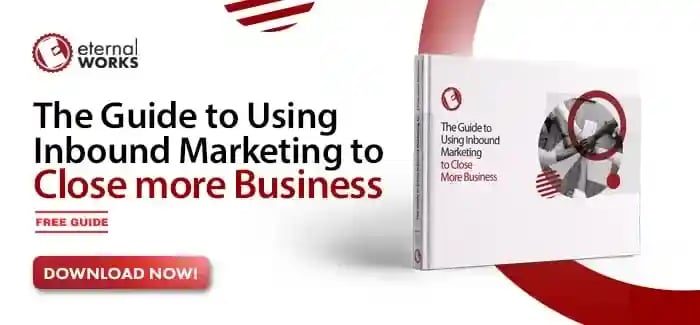Your company can't survive without sales, but do you have the right approach?
The traditional sales process can leave customers feeling pressured into a sale. The inbound sales process takes a different approach, guiding prospects through their sales journey in an informative, comfortable way. At every step, inbound marketing provides value and addresses the customer's priorities, pain points, and interests. This is to say that while each sales team has its own way of conducting the traditional sales process, the flexibility of an inbound sales strategy makes it implementable by every salesperson.
This article answers all your questions related to the inbound sales process and the traditional sales process. Keep reading to discover more insights.
What Is A Traditional Sales process?
A traditional sales process is disruptive. It typically involves interrupting your prospects, forcing a connection to their pain points, and pitching a solution in the hopes of making a sale on the spot. This approach has been relying on a similar process for many years, using the same scripted techniques and a mindset of "selling to everyone."
What Is An Inbound Sales Process?
The inbound sales process focuses on the prospect's pain points, becoming a trusted consultant, and adapting the sales process to the buyer's journey.
It requires a fundamental understanding of how your product or service aligns with your potential customer's pain points.
Your sales representatives will educate potential buyers without bias. This allows customers to decide whether they should opt out of the sales process or proceed to ensure their ultimate happiness.
What Are The Steps In The Traditional Sales Process?
There are seven stages in the traditional sales process. They are prospecting, preparation, approach, presentation, handling objections, closing, and follow-up.
Prospecting
Prospecting is the first step of a traditional sales process. In this stage, you find potential customers and determine whether they require your product or service and if they can afford what you are offering.
Preparation
The next step is preparation. This is where you prepare for initial contact with a potential customer, research the market, and collect all relevant information about your product or service.
Approach
Next, you have to make contact with your client. You can only do so by "approaching" the client. There are three common approaches: premium, question, and product.
Premium Approach
This is an approach where your sales representatives provide potential clients with a promotional item to build their enthusiasm regarding your brand. For example, they can present your potential clients with a gift at the beginning of their interaction.
Question Approach
This stage involves asking potential clients questions to get them interested in your products or brand.
Product Approach
In this stage, you provide the prospect with a sample of your products or services. You can also offer a free trial for a review of your service.
Presentation
In the presentation stage, you show your potential customer how your product or service meets their needs. Here, your sales representative will formally present your product or service, which can be more than a simple PowerPoint presentation.
Handling Objections
The most overlooked of the stages of the inbound sales process is probably the objection-handling stage. This is where you listen to your prospect's concerns and address them. Many unsuccessful salespeople get discouraged after an objection and drop out of the process.
Closing
During this stage, you get the go-ahead from the client to move forward. This means your sales process was successful. Depending on your business, you can have one of three closing techniques: alternative choice close, extra inducement close, and standing room only close.
Alternative Choice
In this situation, you offer the prospect a choice, where both options close the sale—for example, "Will you be paying the whole fee upfront or in installments?" or, "Will that be cash or charge?"
Extra Inducement Close
Here, it requires offering your clients something extra to get them to close. For example, you may provide them with a free month of service or a discount.
Standing Room Only Close
Time is of the essence in this type of closing. Here, you must create a sense of urgency and communicate your intentions to clients. For example, "The price will be going up after this month," or, "We only have six spots left."
Follow-up
Your job doesn't end after you close a sale. In the follow-up stage, you keep in touch with customers you have closed for potential repeat business and referrals.
What Are the Steps In An Inbound Sales Process?
The steps of the inbound sales process include:
- Identifying
- Connecting
- Exploring
- Advising
Salespeople must support their prospective buyers throughout the entire process.
Identifying
Identifying the proper business opportunities starts with finding your prospect's pain points, challenges, and goals. Knowing what to look for helps create a predictable, scalable sales funnel.
Connecting
Connecting with leads means helping them decide whether they should prioritize the goal or challenge they're facing. If your lead makes finding a solution a priority, they become qualified leads.
Exploring
Exploring means learning more about a qualified lead's goals or challenges to assess whether the company's offer is a good fit. If a qualified lead determines that the solution is the right fit, they become an opportunity.
Advising
Advising focuses on the benefits the opportunity can gain from the offered solution. They become a customer if the opportunity agrees that the offering will help them solve their challenge or reach their goal.
Key Takeaway
The inbound sales process is better than traditional sales because it shortens the sales cycle, creates less friction, and handles objections sooner so you can close more deals.
Wrap Up
Virginia Beach Marketing & Growth Agency is your ideal choice if you want to grow your business. With a proper inbound marketing strategy, you will be able to come up with unmatched content that aligns with your client's needs and ensure a long-lasting relationship.
Download the guide on how to use inbound marketing to close more business.



